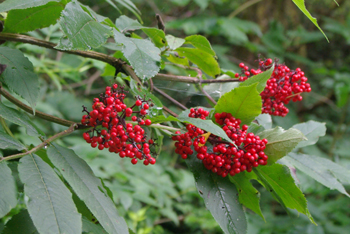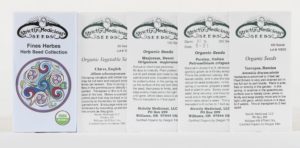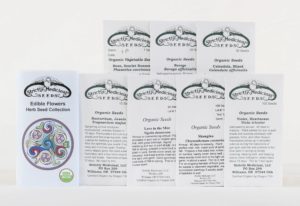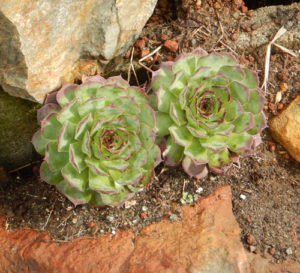Plants ordered now will ship Spring 2026 🙂
Elderberry, Red (Sambucus racemosa), potted shrub, 9-inch pot, organic
$21.00
Family: Honeysuckle (Caprifoliaceae)
Hardy to Zones 3 to 9
Deciduous shrub to small tree native to North America and Eurasia. The plant can grow as tall as 25 feet, and a typical spread is about 12 feet. The yellowish-white flowers are highly aromatic (really the best smelling of all the elder species). Flowering is in late spring, and all other factors being equal, fruiting occurs before other elder species, usually in June. The berries are high in vitamin C and quite tasty, but the SEEDS have the highest toxicity of all the elder species, so either you have to spit the seeds, or juice the berries and throw out the seeds, or cook the berries, which helps detoxify the seeds (see my book Making Plant Medicine for the finer details of all this.) For all practical purposes, both for production of medicines and jams, it is best to use black or blue elderberries. The birds do very well with the red. Red elder makes a fast-growing shrub for landscape, shelterbelt or edible hedgerow. I rate this plant with very high marks for habitat diversification, as it is indeed a preferred foodstuff for many species of birds. Space trees 10 feet or more apart.
Potted shrub in a 9-inch-deep pot, Certified Organically Grown
Out of stock






Question
scheibelhut.terry –
Hi Richo, can the flowers be eaten. I have made pancakes out of the other types of elderberry trees. Thanks , Terry
Upvote if this was helpful (0) Downvote if this was not helpful (0) Watch Unwatch Flag for removal
Richo Cech –
Hi Terry, I do not recommend this. Red elderberrhy is high in cyanogenic glycosides. Use European Black Elderberry. We have awesome plants available on this. Richo
Upvote if this was helpful (0) Downvote if this was not helpful (0) Flag for removal
scheibelhut.terry –
Thank you Richo for being honest. Terry
Upvote if this was helpful (0) Downvote if this was not helpful (0) Flag for removal